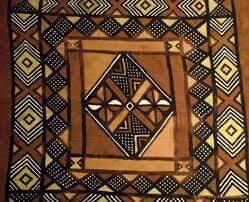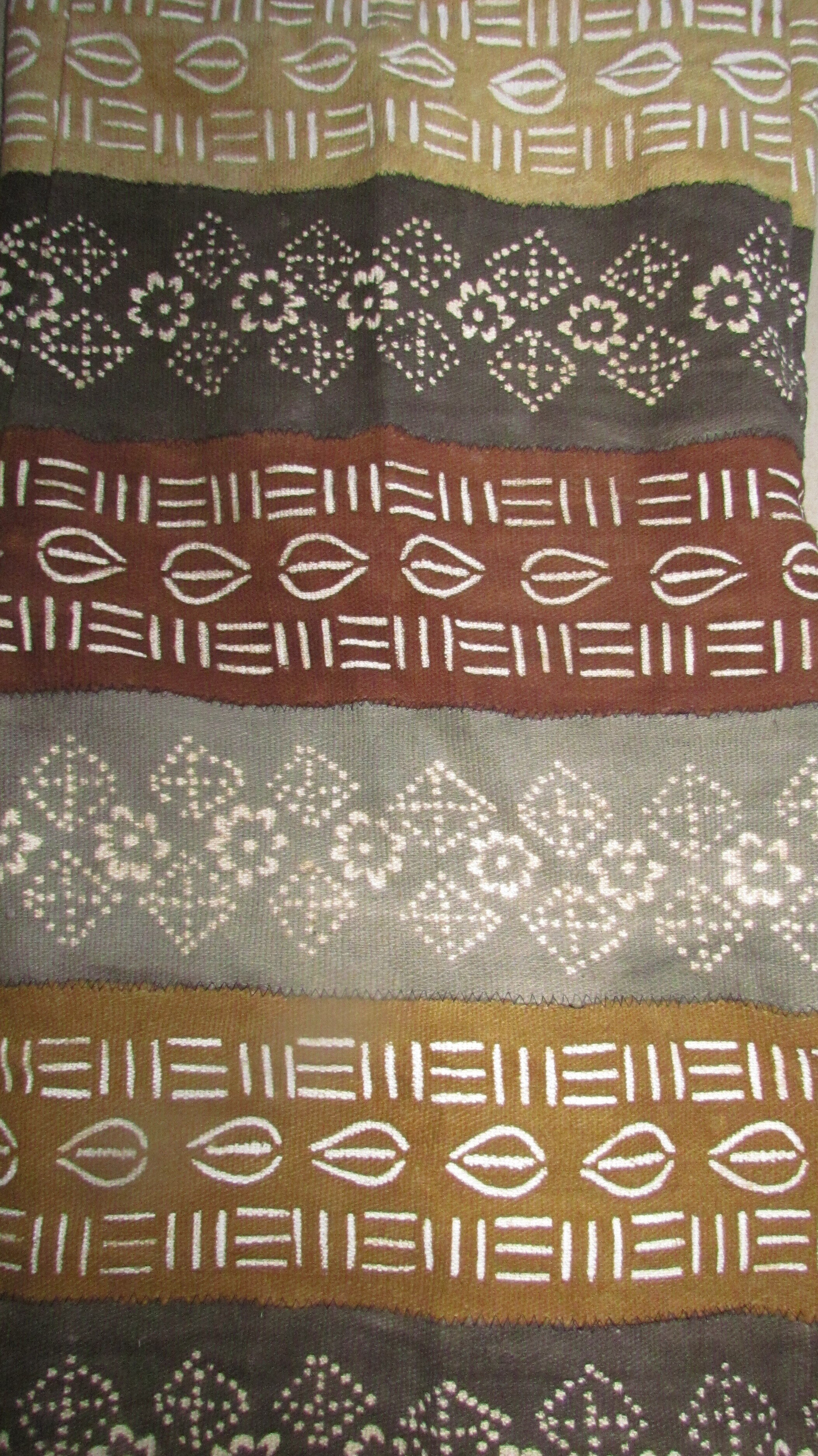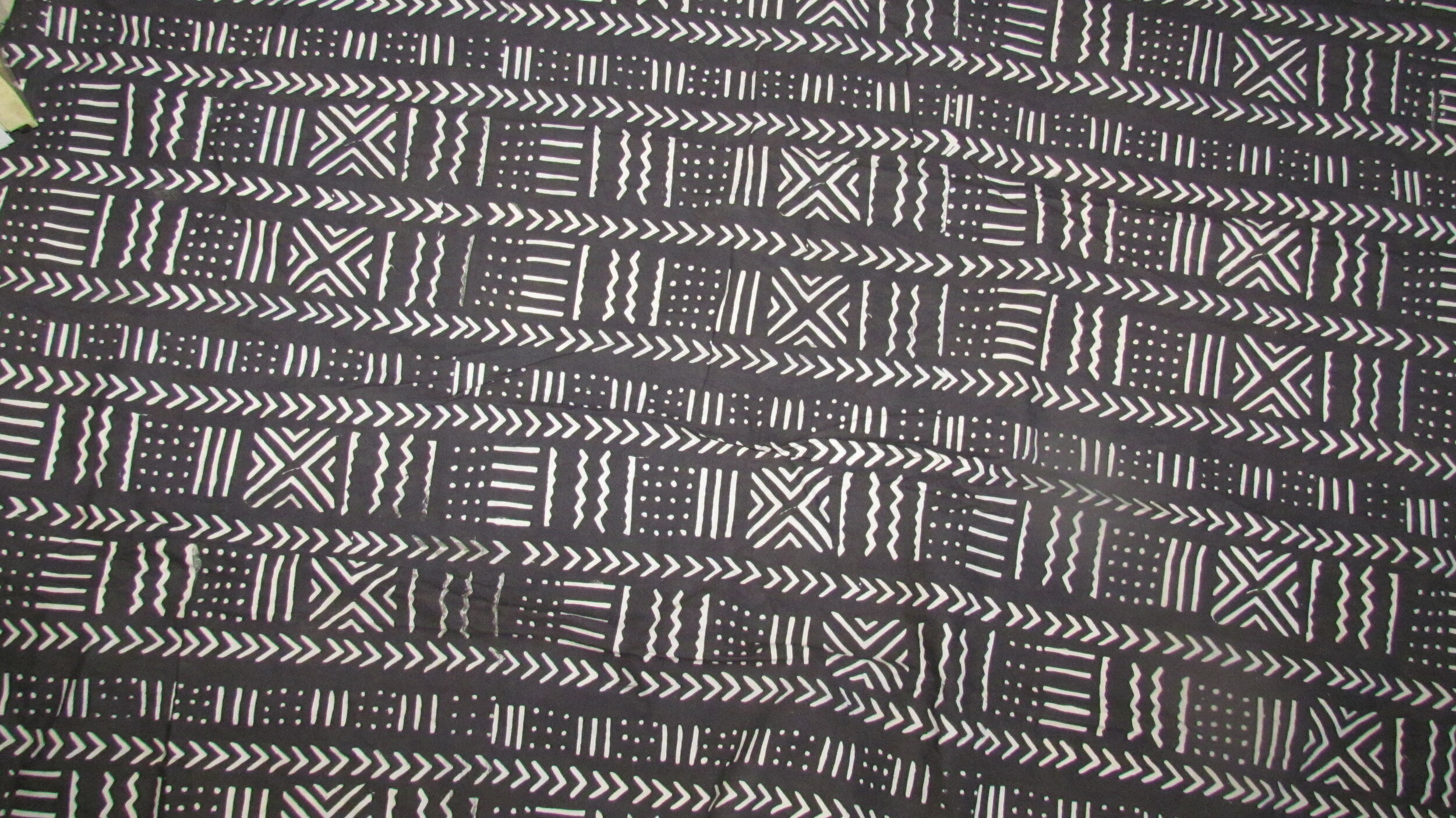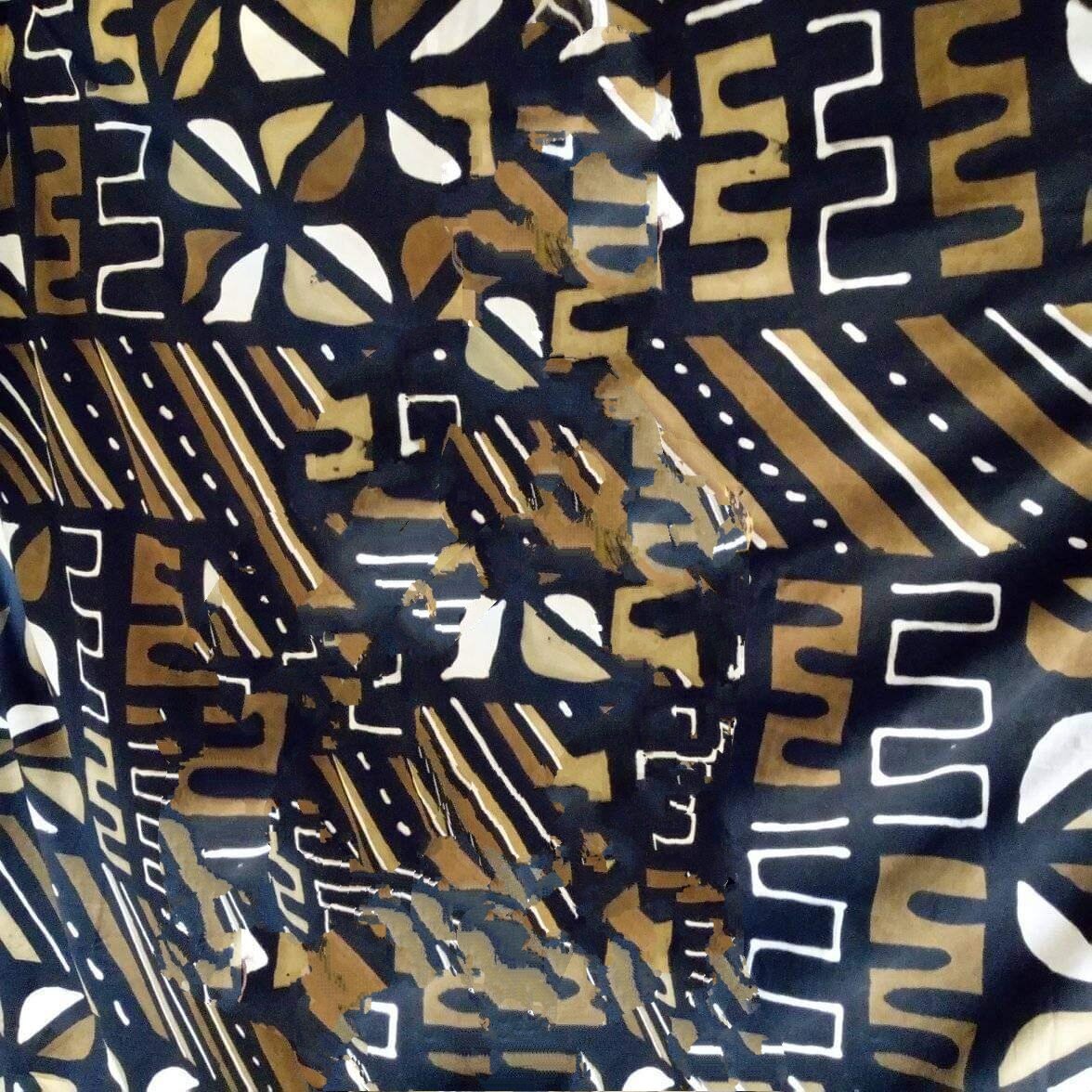By Hindaty Traore, Girls Project Manager
The word "bogolan" in the Bambara language means "made with the earth.” Bogolan is both a traditional fabric and a dyeing technique from Mali. It is a cotton canvas, handmade, with patterns in shades of yellow and black, with touches of red, brown and white.
Bogolan is a traditional and ancestral knowledge, originating in Mali. Initially, it was reserved for the class of hunters, warriors and healers. Several Malian ethnic groups such as Dogons, Bobos, Senoufos, Miniankas , Mainkés and Bambaras have practiced this traditional art. Since then, bogolan has spread throughout Africa from the west, particularly into Guinea and in Burkina Faso .
The origin of the bogolan technique is mysterious. According to a legend , a woman clad in a loincloth complexion ' n' Galama "would my lenc o ntreusement stained with mud prov e ing the river. When she tried to clean it, she saw that the mud had dyed the fabric of the garment , the stain s became indelible .
The patterns and colors used have particular meanings: the meanings may represent the circumcision, the hunter, the marriage, the girl, or the loincloth of the wife. In addition, tissue bogolans were used as the natural antibiotics after circumcision.
The creation and dyeing of bogolan
Bogolan is an ancestral technique, which draws its ingredients from nature: water, earth, sun, and natural pigments are each key inputs. Its artisanal production is carried out in several stages :
The spinning and weaving of bogolan:
Step 1: the bogolan is a cotton canvas, more or less thick. The thread is spun by old women from the village, and it will t hen be woven by the men called " the weavers.”
Step 2: These bands, about 10 to 15 cm, are passed through a yellow dye bath . Then, they are sewn together, by hand, to form pieces of fabric of variable dimensions large enough to make clothes .
Step 3: The fabrics are again worked with mineral dyes or vegetable conccoctions (the n ' galama leaf of the tree anogeissus leiocarpus ) or obtained from crushed leaves or bark of trees. This soaking produces shades of ocher and brown.
Step 4: The fourth step is to collect the clay, that is to say the mud in the backwater of a river. Then, the clay is left for several weeks to ferment in jars placed in the earth. The outline of the patterns is then painted on the the fabric by hand using a toothbrush, with the fermented clay from the rivers of Niger or Bani.
An oxidation process between the tannin in the decoction and the iron oxide by the earth will interact and leave a dense and indelible black dye. The drying and soaking operations will be repeated regularly to obtain a more pronounced drawing.
Step 5: Then, the fabric will be dried in the sun and finally washed to remove excess mud. Locally, the fabric will be used to make clothes for the members of the village.
The traditional bogolans play on the yellow-black contrast. Buy contemporary pieces have been enriched with a touch of white (a mixture of chlorine, shea soap and lye) or dark red and brown thanks to natural dyes extracted from the barks and leaves of local trees.
Bogolan, today.
First commercially marketed in 1970 in Mali, the bogolan became known in Western countries thanks to the Malian designer Chris Seydou in his haute couture collections. Building on its success, bogolan is used in Western countries and classically combines modernity and tradition. It inspires many designers and appears as a decorative textile (bedspreads, tablecloths, curtains, etc.), clothing , shoes and fashion accessories (shirts, skirts, scarves ).






